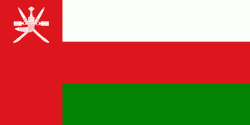Qalhat (Qalhāt)
The ancient city of Qalhat, or Galhat (قلهات) (in the map of Abraham Ortelius, it named as Calha), is located just over 20 km north of Sur, in the Ash Sharqiyah Region of northeastern Oman.
Marco Polo visited Qalhat in the 13th century, referring to it as Calatu. Ibn Battuta visited the city in the 14th century, noting that it had "fine bazaars and one of the most beautiful mosques." He further noted the mosque was built by Bibi Maryam and included walls of qashani. Bibi Maryam continued to rule Qalhat and Hurmuz after the death of her husband Ayaz in 1311 or 1312. Zheng He visited the city in the 15th century, referring to it as 加剌哈 (Mandarin: jia-la-ha; Cantonese: gaa-laat-haa).
Qalhat served as an important stop in the wider Indian Ocean trade network, and was also the second city of the Kingdom of Ormus. By 1507 when it was captured by Afonso de Albuquerque on behalf of the Portuguese Empire, the city was already in decline as trade shifted to Muscat. Covering more than 60 acre, Qalhat was surrounded by fortified walls that contained houses and shops. Very little remains of the ancient city, save for the now dome-less mausoleum of Bibi Maryam. Artifacts from as far away as Persia and China were found on-site.
Recently, a research conducted by geoarchaeologists of the University of Bonn conclude that earthquake activity along the most prominent structural element, the Qalhat Fault, is a plausible reason for the decline of the medieval city.
Marco Polo visited Qalhat in the 13th century, referring to it as Calatu. Ibn Battuta visited the city in the 14th century, noting that it had "fine bazaars and one of the most beautiful mosques." He further noted the mosque was built by Bibi Maryam and included walls of qashani. Bibi Maryam continued to rule Qalhat and Hurmuz after the death of her husband Ayaz in 1311 or 1312. Zheng He visited the city in the 15th century, referring to it as 加剌哈 (Mandarin: jia-la-ha; Cantonese: gaa-laat-haa).
Qalhat served as an important stop in the wider Indian Ocean trade network, and was also the second city of the Kingdom of Ormus. By 1507 when it was captured by Afonso de Albuquerque on behalf of the Portuguese Empire, the city was already in decline as trade shifted to Muscat. Covering more than 60 acre, Qalhat was surrounded by fortified walls that contained houses and shops. Very little remains of the ancient city, save for the now dome-less mausoleum of Bibi Maryam. Artifacts from as far away as Persia and China were found on-site.
Recently, a research conducted by geoarchaeologists of the University of Bonn conclude that earthquake activity along the most prominent structural element, the Qalhat Fault, is a plausible reason for the decline of the medieval city.
Map - Qalhat (Qalhāt)
Map
Country - Oman
 |
 |
| Flag of Oman | |
From the 17th century, the Omani Sultanate was an empire, vying with the Portuguese and British empires for influence in the Persian Gulf and Indian Ocean. At its peak in the 19th century, Omani influence and control extended across the Strait of Hormuz to Iran and Pakistan, and as far south as Zanzibar. When its power declined in the 20th century, the sultanate came under the influence of the United Kingdom. For over 300 years, the relations built between the two empires were based on mutual benefit. The UK recognized Oman's geographical importance as a trading hub that secured their trading lanes in the Persian Gulf and Indian Ocean and protected their empire in the Indian sub-continent. Historically, Muscat was the principal trading port of the Persian Gulf region.
Currency / Language
| ISO | Currency | Symbol | Significant figures |
|---|---|---|---|
| OMR | Omani rial | رع. | 3 |
| ISO | Language |
|---|---|
| AR | Arabic language |
| EN | English language |
| UR | Urdu |















